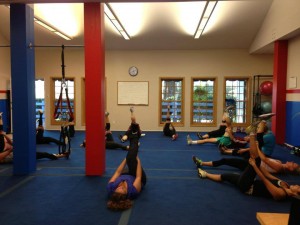You see the models in the magazines and the actors on TV and covet their bodies. Or you wish you weighed what you did in high school. But if you weighed that much today, would you really be healthy?
When considering what you should weigh, it’s important not to compare yourself to others. What’s good for you may not be what’s good for someone else. If you compare yourself to someone who’s obese, you may think you’re fine if you’re just a little overweight. Compare yourself to a model and you may try to lose too much, set your goals too high, and give up. Your ideal weight depends on many factors, including your age, height, sex, bone density, and your muscle-to-fat ratio. Your genes, hormones, and hunger level all help keep your body weight in its natural set range.
There are several methods for determining how much you should weigh: your body mass index (BMI), your hip-to-waist ratio (HWR), and your body fat percentage.
The Santa Barbara boot camp will show you how to calculate each method.
Body Mass Index
Your body mass index takes into account your weight and your height.
To figure your BMI using metric units, take your weight (in kilograms) and divide it by your height (in meters) squared. For example, if you weight 80 kilograms and you are 1.8 meters tall, divide 80 by 3.24. Your BMI equals 24.69
If you prefer pounds and inches, take your weight (in pounds) and multiply by 703. Then divide by your height (in inches) squared. For example, if you weigh 200 pounds and you’re 6 feet tall (72 inches), multiply 200 by 703 then divide by 5184. Your BMI equals 27.12.

Here’s how to interpret your BMI:
Less than 18.5: Underweight
18.5–25: Ideal
25–30: Overweight
More than 30: Obese
Unfortunately, your body mass index is not a completely accurate measure of ideal weight since it doesn’t take into account muscle mass or your chest, waist, and hip measurements. Since muscle weighs more than fat, a thin, tall runner may have a higher BMI than a couch potato with a large belly.
Your BMI measurement can easily underestimate your amount of body fat if you’re overweight and overestimate body fat if you’re thin or muscular. So while it’s a quick and easy way to have a general idea of your ideal weight, it’s not a tell-all measurement.
Waist-to-Hip Ratio
A slightly better way to determine if you are overweight, underweight, or healthy weight and how your weight affects your risk for serious health problems, use your waist and hip measurements.
To find your WHR, measure your waist at the smallest circumference, and then divide that by the measurement of your hips at their widest point.
For example, if your waist measures 30 inches and your hips are 40 inches, divide 30 by 40 to get a WHR of .75.
Here’s a summary of WHR and its relation to cardiovascular health problems.
WHR measurements for men…

Less than 0.9: Low Risk
0.9–0.99: Moderate Risk
Greater than 1.0: High Risk
If you’re a female…
Less than 0.8: Low Risk
0.8–0.89: Moderate Risk
Greater than 0.9: High Risk
Body Fat Percentage
Calculating your percentage of body fat is a more accurate way to measure the true composition of your entire body—not just your waist, hips, height, or weight. Your body fat percentage is found by dividing the weight of your fat by your total body weight.
Here’s a breakdown of body fat percentages by sex and fitness level:
Male Athletes: 6 to 13 percent
Female Athletes: 14–20 percent
Average Male: 18–25 percent
Average Female: 25–31 percent
Obese Male: 38 percent or more
Obese Female: 42 percent or more
Your percentage may fall somewhere between athletic and average or between average and obese depending on how fit or overweight you are.
Unfortunately, there isn’t a do-it-yourself formula to determine your body fat percentage. Instead, you’ll need to use dual-energy X-ray absorptiometry, near-infrared interactance, or bioelectrical impedance analysis—technology you can access at your doctor’s office or gym.
Once you have a general idea of what your ideal weight should be, the boot camp in Santa Barbara time to put into practice the lifestyle changes to make that new weight possible.
